
Akira Kurosawa was a Japanese filmmaker and painter who directed 30 films in a career spanning over five decades. He is widely regarded as one of the greatest and most influential filmmakers in the history of cinema. Kurosawa displayed a bold, dynamic style, strongly influenced by Western cinema yet distinct from it; he was involved with all aspects of film production.
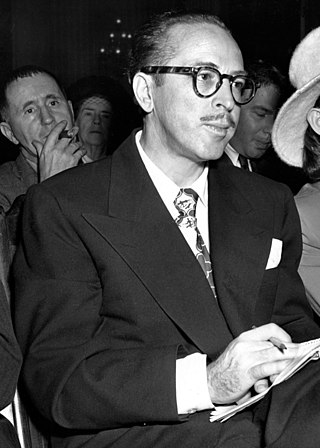
James Dalton Trumbo was an American screenwriter who scripted many award-winning films, including Roman Holiday (1953), Exodus, Spartacus, and Thirty Seconds Over Tokyo (1944). One of the Hollywood Ten, he refused to testify before the House Un-American Activities Committee (HUAC) in 1947 during the committee's investigation of alleged Communist influences in the motion picture industry.

Johnny Got His Gun is an anti-war novel written in 1938 by American novelist Dalton Trumbo and published in September 1939 by J. B. Lippincott. The novel won one of the early National Book Awards: the Most Original Book of 1939. A 1971 film adaptation was written and directed by Trumbo.

Rashomon is a 1950 Jidaigeki drama film directed and written by Akira Kurosawa, working in close collaboration with cinematographer Kazuo Miyagawa. Starring Toshiro Mifune, Machiko Kyō, Masayuki Mori, and Takashi Shimura as various people who describe how a samurai was murdered in a forest, the plot and characters are based upon Ryunosuke Akutagawa's short story "In a Grove", with the title and framing story being based on "Rashōmon", another short story by Akutagawa. Every element is largely identical, from the murdered samurai speaking through a Shinto psychic to the bandit in the forest, the monk, the assault of the wife and the dishonest retelling of the events in which everyone shows their ideal self by lying.
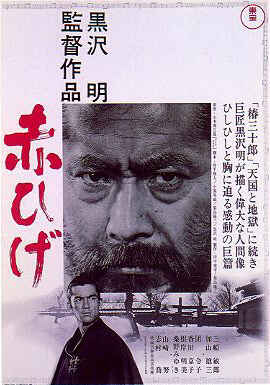
Red Beard is a 1965 Japanese jidaigeki film co-written, edited, and directed by Akira Kurosawa, in his last collaboration with actor Toshiro Mifune. Based on Shūgorō Yamamoto's 1959 short story collection, Akahige Shinryōtan, the film takes place in Koishikawa, a district of Edo, towards the end of the Tokugawa period, and is about the relationship between a town doctor and his new trainee. Fyodor Dostoevsky's novel Humiliated and Insulted provided the source for a subplot about a young girl, Otoyo, who is rescued from a brothel.

Dreams is a 1990 magical realist anthology film of eight vignettes written and directed by Akira Kurosawa, starring Akira Terao, Martin Scorsese, Chishū Ryū, Mieko Harada and Mitsuko Baisho. It was inspired by actual recurring dreams that Kurosawa said he had repeatedly. It was his first film in 45 years in which he was the sole author of the screenplay. An international co-production of Japan and the United States, Dreams was made five years after Ran, with assistance from George Lucas and Steven Spielberg, and funded by Warner Bros. The film was screened out of competition at the 1990 Cannes Film Festival, and has consistently received positive reviews.

Diane Marie Antonia Varsi was an American film actress best known for her performances in Peyton Place – her film debut, for which she was nominated for an Academy Award – and the cult film Wild in the Streets. She left Hollywood to pursue personal and artistic aims, notably at Bennington College in Vermont, where she studied poetry with poet and translator Ben Belitt.
Timothy James Bottoms is an American actor and film producer. He is best known for playing the lead in Johnny Got His Gun (1971); Sonny Crawford in The Last Picture Show (1971), where he and his fellow co-stars, Cybill Shepherd and Jeff Bridges, rose to fame; and as James Hart, the first-year law student who battles with Prof. Kingsfield, in the film adaptation The Paper Chase (1973). He is also known for playing the main antagonist in the disaster film Rollercoaster (1977) and for playing President George W. Bush multiple times, including on the sitcom That's My Bush!, the comedy film The Crocodile Hunter: Collision Course and the docudrama DC 9/11: Time of Crisis.

Stray Dog is a 1949 Japanese film noir crime drama directed and co-written by Akira Kurosawa and starring Toshiro Mifune and Takashi Shimura. It was Kurosawa's second film of 1949 produced by the Film Art Association and released by Shintoho. It is also considered a detective movie that explores the mood of Japan during its painful postwar recovery. The film is also considered a precursor to the contemporary police procedural and buddy cop film genres, based on its premise of pairing two cops with different personalities and motivations together on a difficult case.
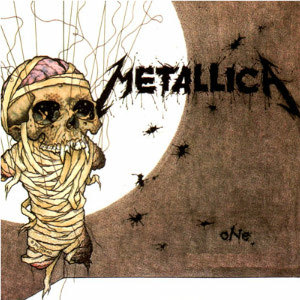
"One" is a song by American heavy metal band Metallica, released as the third and final single from the band's fourth studio album, ...And Justice for All (1988). Written by band members James Hetfield and Lars Ulrich, the song portrays a World War I soldier who is severely wounded—arms, legs and jaw blown off by a landmine, blind and unable to speak or move—begging God to take his life. In the music video, attempting to communicate with the hospital staff he jolts in his bed, spelling SOS in Morse code. Production of the song was done by the band alongside Flemming Rasmussen. The song was the band's first to chart in the U.S., reaching number 35 on the Billboard Hot 100. It was also a number one hit in Finland.
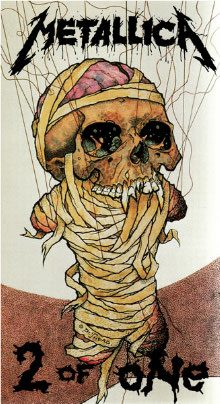
2 of One is a video album by American heavy metal band Metallica. It was released on June 6, 1989, through Elektra Entertainment and features two versions of the group's first music video, "One", from their fourth studio album ...And Justice for All.

Madadayo is a 1993 Japanese comedy-drama film. It is the thirtieth and final film to be completed by Akira Kurosawa. It was screened out of competition at the 1993 Cannes Film Festival. The film was selected as the Japanese entry for the Best Foreign Language Film at the 66th Academy Awards, but was not accepted as a nominee.

Homicide is a 1991 American crime drama film written and directed by David Mamet. The film's cast includes Joe Mantegna, William H. Macy, and Ving Rhames. It was entered in the 1991 Cannes Film Festival.

Rhapsody in August is a 1991 Japanese film by Akira Kurosawa based on the novel Nabe no naka by Kiyoko Murata. The story centers on an elderly hibakusha, who lost her husband in the 1945 atomic bombing of Nagasaki, caring for her four grandchildren over the summer. She learns of a long-lost brother, Suzujiro, living in Hawaii who wants her to visit him before he dies. American film star Richard Gere appears as Suzujiro's son Clark. The film was selected as the Japanese entry for the Best Foreign Language Film at the 64th Academy Awards, but was not accepted as a nominee.
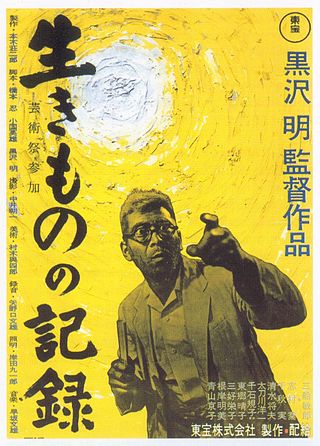
I Live in Fear is a 1955 Japanese drama film directed by Akira Kurosawa, produced by Sōjirō Motoki, and co-written by Kurosawa, Shinobu Hashimoto, and Hideo Oguni. The film is about an elderly Japanese factory owner so terrified of the prospect of a nuclear attack that he becomes determined to move his entire extended family to what he imagines is the safety of a farm in Brazil.
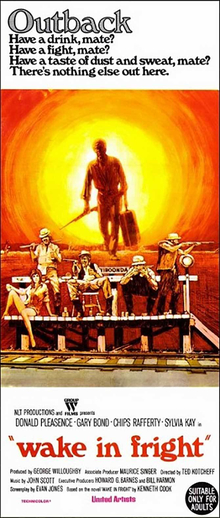
Wake in Fright is a 1971 Australian New Wave film directed by Ted Kotcheff, written by Evan Jones, and starring Gary Bond, Donald Pleasence, Chips Rafferty, Sylvia Kay and Jack Thompson. Based on Kenneth Cook's 1961 novel of the same name, it follows a young schoolteacher who descends into personal moral degradation after finding himself stranded in a brutal, menacing town in outback Australia.

The 24th Cannes Film Festival was held from 12 to 27 May 1971. The Palme d'Or went to The Go-Between by Joseph Losey.

Solaris is a 1972 Soviet science fiction drama film based on Stanisław Lem's 1961 novel of the same title. The film was co-written and directed by Andrei Tarkovsky, and stars Donatas Banionis and Natalya Bondarchuk. The electronic music score was performed by Eduard Artemyev and features a composition by J.S. Bach as its main theme. The plot centers on a space station orbiting the fictional planet Solaris, where a scientific mission has stalled because the skeleton crew of three scientists have fallen into emotional crises. Psychologist Kris Kelvin (Banionis) travels to the station to evaluate the situation, only to encounter the same mysterious phenomena as the others.

M*A*S*H is a 1970 American dark war comedy film directed by Robert Altman and written by Ring Lardner Jr., based on Richard Hooker's 1968 novel MASH: A Novel About Three Army Doctors. The picture is the only theatrically released feature film in the M*A*S*H franchise.















